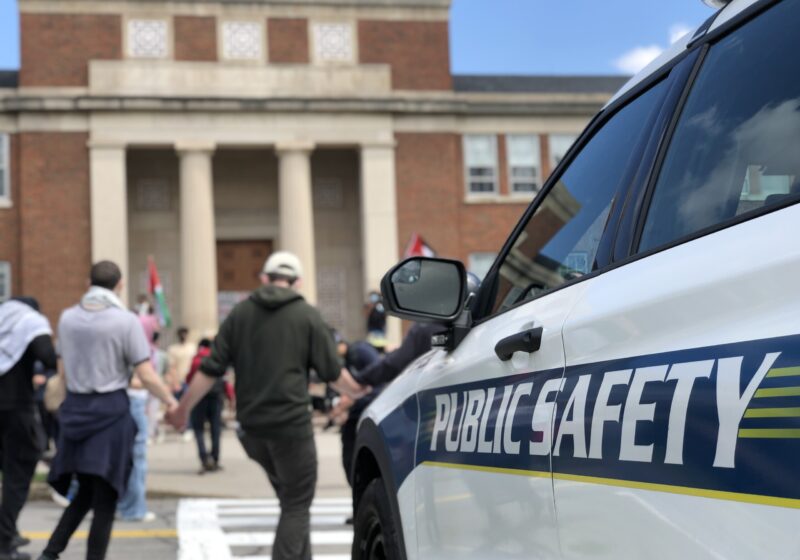The Islamic State (IS) developed out of corruption from the Iraqi and Syrian governments in their oppression of Sunni civilians. In Syria, the development of both IS and the Syrian rebels now fighting against Assad is largely a result of the Syria government’s oppression. Nearby countries, however, are also to blame. For example, Turkey allowed loose borders with Syria, facilitating a safe zone for terrorist groups. Saudi Arabia and Qatar funded various Sunni militias in order to gain regional influence. Russia watched and eventually assisted Assad as he brutally bombed Syrian civilians. Russia and Iran support President Assad because he protects their interests in the Middle East. As Syrians began protesting against their corrupt government, they were met with violent attacks from the Lebanese terrorist group Hezbollah, sent into the country by Iran, fueling a violent rebellion.
Prior to this rebellion, and comparable to the situation in Iraq, Assad had successfully suppressed sectarian divisions within Syria. As a result, extremist, pro-jihadist Sunnis were able to gain momentum, in addition to the Free Syria Army (FSA), as many Sunnis were indignant with Assad’s regime. The FSA proved to be disorganized and incohesive, providing more room to grow and operate in Syria for the jihadist groups. IS was able to attack weak rebel troops effectively because of the permeability of and disorganization within the country. IS eventually settled in the city of Raqqa, bringing in numerous foreign fighters and using the city as a center of communication. Raqqa is an interesting city because it was the only civilian area under rebel control not devastated by President Assad’s ruthless air force.
This is a peculiar trend. It makes sense that Assad wants to focus all of his military strength on his direct adversaries, such as the FSA or Kurdish forces, like the People’s Protection Units. However, it is evident that IS has no regard for who it fights, and, as an organization, it is much more powerful, well-supplied and well-organized than any of the forces whose primary mission is overthrowing Assad’s regime. It would make sense for Assad to attack IS along with rebel groups.
In addition, Russia has provided Syria with military assistance, promulgating support for Syria in its fight against the Islamic State. However, according to the U.S. State Department, 90 percent of Russian airstrikes have been focused on strongholds not controlled by IS. Although some of Russia’s resources have been allocated toward fending off IS, the vast majority of them have been against rebel groups. This is most likely a response to the training of Syrian rebel groups by the U.S., which would make the civil war in Syria a proxy war. Therefore, Syria has used IS to manifest the notion that there are worse options for leadership than Assad himself. Keep in mind the man has used chemical warfare against and is currently bombing his own civilians as he attemps to promotes this ideal.
Assad has also used IS, along with al-Qaeda and its affiliates, to try and deceive the U.S. of the identity of the Syrian opposition. And, in January 2014, The Telegraph published a report that Assad had been working with al-Qaeda and IS since the spring of 2013, facilitating oil sales and protection of the oil fields held by groups.
Yet, another example of Assad’s cataclysm of terrorism was when, according to The National, a government-owened newspaper in the United Arab Emirates, he released several Islamic militant prisoners from Saidnaya Prison, located north of Damascus, to end a peaceful protest and start a violent rebellion. To worsen the situation, as a previous Syrian Military Intelligence official said in that same report from The National, “The regime did not just open the door to the prisons and let these extremists out, it facilitated them in their work, in their creation of armed brigades.” It has been suspected that the leader of Jabhat Al Nusra, an al-Qaeda affiliate, Abu Mohammed al-Jolani, was one of those released prisoners, according to the same article.
A last example of Assad’s assistance to IS, although there are many more, was discovered by Michel Kilo, a member of the Syrian National Coalition, who announced that there are photos of IS emirs with President Assad. The pictures were taken before they had become emirs of IS, but this is only one of the connections between members of IS and Syrian officials. This provides a direct connection between the leadership of IS and President Assad, providing a possible medium of communication between the two parties.
It is clear that Assad is not adamantly opposed to IS—yet. He has proven time and time again that he merits absolutely zero trust from foreign powers. His government is listed by the U.S. State Department as a sponsor of terrorist organizations, and the civil war he incited through his oppressive regime has resulted in the death of an estimated 250,000 people on all sides The man will do absolutely anything in order to maintain his power. Despite this, I do not think it is necessarily correct to strongly advocate for U.S. support of FSA and Kurdish troops because, remembering why IS developed in the first place, it will relinquish a hold on sectarian conflicts. The U.S., in overthrowing Saddam Hussein, did not anticipate the underlying conflicts between the ethnic groups who ruthless dictator was suppressing. The difference here is that the U.S. has more information than it did in Iraq. Currently, the focus should be on preventing IS because it poses a massive global threat; however, going forward, any opposition to Assad’s regime should be met with caution so as to not to unleash another terrorist group in the region. The UN needs to effectively analyze potential sectarian terrorist groups deriving from conflict and suppression in the Middle East, keeping in mind that some rulers, like Assad, are willing by any means to protect their own power.
Sehnert is a member of the class of 2019.

